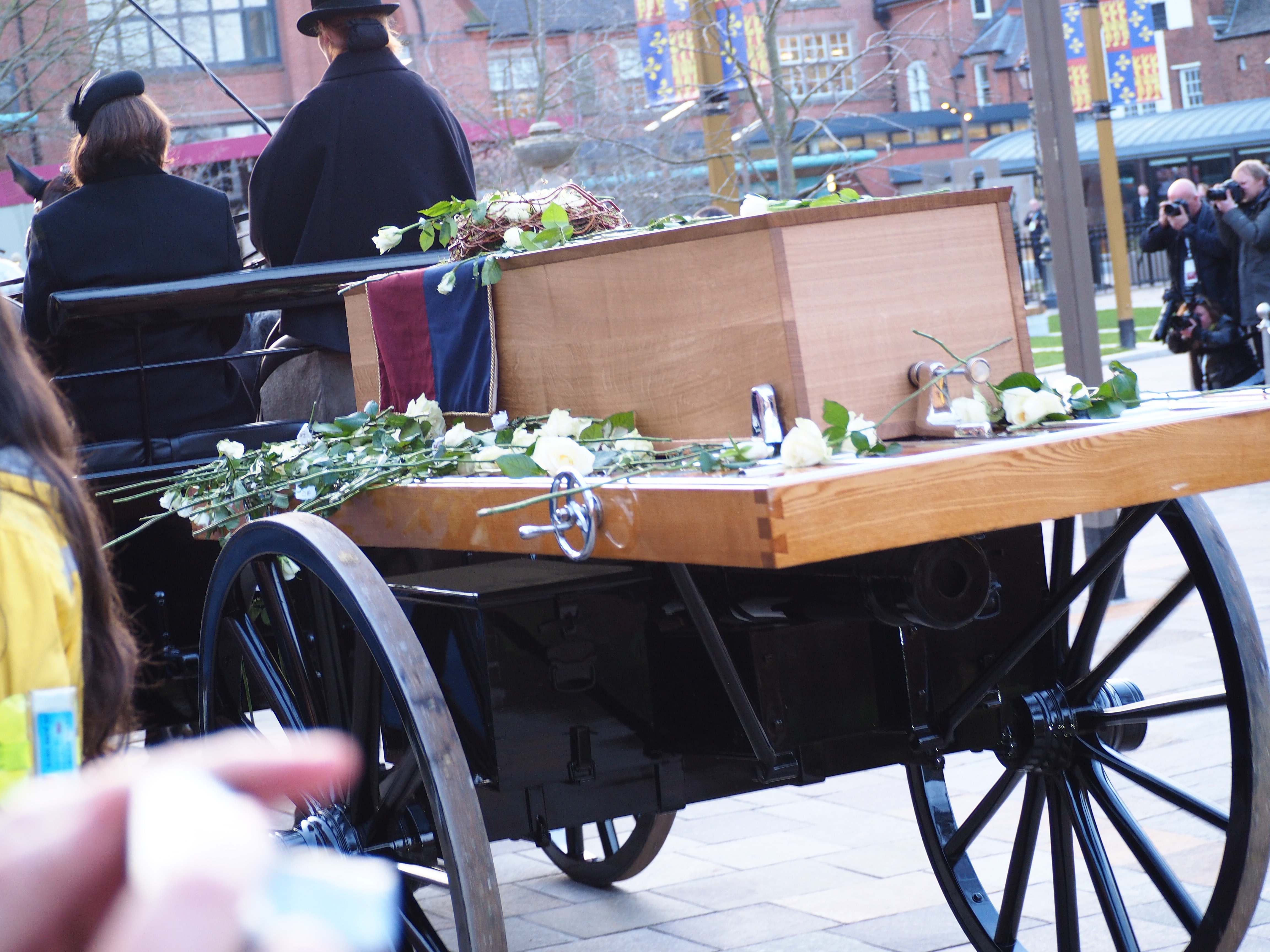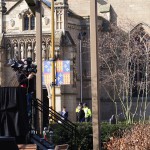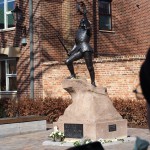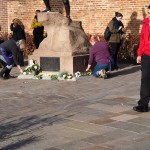
March 25, 2015, by Lindsay Brooke
Richard III and the rewriting of history- but whose history?
There have surely been few cities who have endured as much scrutiny as Leicester has been subject to in the course of the past week. Thrust into the limelight almost by accident, because of a historical battle near Bosworth in 1485, this very modern and multi-national city, faced a very medieval problem when archaeologists discovered the remains of Richard Duke of Gloucester and King of England. The story of the discovery and identification of the ‘King in the Carpark’ is in itself history by now, rightly celebrating some very fine work by the archaeologists from the University of Leicester, but its the events from this week that are showing how the problem of what to do with a dead king has been solved.
The world is watching as Leicester reinters the remains of the Last Plantagenet King. What a community does with its dead tells a story, and as has been observed by more than one observer,(e.g. Clerk of Oxford), events in Leicester are resembling a hagiographical tale of finding, identifying and recontextualizing the remains of a significant person.In medieval stories, these remains would be those of a saint and/or a king, and the significance of these stories is the creation of a site of memory for a community.
Clerk of Oxford hits the nail on the head when he writes: “Saints’ translations, and the texts written about them, can tell us fascinating things about the communities which organised these events: which historical figures were most valued and why, which parts of a community’s history were most important to its identity at any point in time, how a community defined itself and told the story of its own past. In general, saints’ translations are much less about the body being reburied than they are about the body which is arranging the translation, and these questions of identity, communal experience, and engagement with local and institutional history go much deeper than a desire for fund-raising.”
So, what is unfolding in Leicester this week, witnessed by thousands of spectators in Leicester itself, and hundreds of thousands more through media such as television and Twitter, is the rewriting less of Richard III’s history but the integration of the history of the last Plantagenet king into Leicester’s own sense of self. Richard III has been appropriated by the city where through an accident of history he met his death on the battlefield; Richard had certainly never been associated with Leicester in life, but has become associated with it through death.
This has created a relationship of obligation for the City, one it has responded to with dignity and honour’ as stated in the motto for this week’s reinterment events. In death, the remains of Richard III have become signifiers for the party who has control over them. Henry VII, the original possessor of Richard III’s remains, was as aware of the power this gave him than anybody else, and used the display of Richard’s body to great success. In one of the most-quoted Tudor sources, Polydore Vergil’s English History, Vergil describes Richard’s end at Bosworth as the ignominious end well deserved of a traitor, with a victorious Henry whose first act after victory was to ‘give forthwith thanks unto Almightie God’, before acknowledging the help of his loyal nobles, offering them reward for their services and then accepting to wear the crown so recently claimed by Richard. After asserting his right to be King, the next step was to punish the usurper, and to humiliate him for his aspirations to be the rightful King.
So, spectacle and pageantry was needed, and events had to be witnessed to establish the ‘correct’ version of history: where Richard had ridden out of Leicester mounted on a war horse, crowned, upright, armoured as a victorious general and king, flying his banners and followed by loyal troops, this journey had to be made in reverse to visualise the fall of the former king. And sources such as Polydore Vergil are very precise in telling us about Richard’s re-entry into Leicester. This time, ‘the body of king Rycherd nakyd of all clothing, and layd upon an horsebake with the armes and legges hanging downe on both sydes, was browght to thabbay of monks ranciscans at Leycester, a miserable spectacle in good sooth, but not unworthy for the man’s lyfe, and ther was buryed two days after without ay pompe or solemne funerrall’. In other words, Henry’s actions of making visible the fallen state of his vanquished foe by returning him to the place he had most recently occupied as a King, and reducing his visibility after death by assigning him a Christian, but low status resting place, created the dominant version of Tudor history, confirmed and sealed through performance.
The rediscovery and exhumation of Richard’s remains in 2012 created an obligation for reinterment of the body, and what was particularly interesting was that the day following the positive identification of the body marked the launch of a legal challenge to the High Court over possession of the remains from York, with occasionally quite heated debates over the competing claims of various locations. Leicester’s claim was upheld, and this week celebrates and demonstrates Leicester’s response to the challenge of how to reframe the mortal remains of a controversial and highly significant King.
Richard has become visible again, because by giving him a permanently accessible burial place, Leicester has created a site of memory that allows for an engagement with the history of the War of the Roses through interest in one of its protagonists. More though. Richard has also been restored into the chronology and timeline of a community and perspectives and viewpoints have altered by this repositioning through both a carefully planned spectacle showcasing Leicester and its history, and leaving a site for visitors to make up their own mind.
The canonical history of the War of the Roses has become many histories, and not all of them necessarily what one might expect. One of the lesser reported events this week has been possible one of the most interesting to reflect on. On Monday 25th March, The Leicestershire Sikh Alliance held a ‘A Very Sikh Celebration- Of the Last Plantagenet King of England’ emphasising the significance of a shared history for the varied communities of modern Leicester. Now how is that for rewriting history?
This article was written by Dr Gaby Neher, an expert in Renaissance Art History at The University of Nottingham. She is based in the Department of History of Art. Gaby was among the 1000s of people who lined the streets of Leicester on Sunday to see Richard lll’s funeral procession. The pictures in this article are courtesy of Dr Neher.
- Sunday 22 March 2015
- Sunday 22 March 2015
- Sunday 22 March 2015
- Sunday 22 March 2015
- Sunday 22 March 2015
- Sunday 22 March 2015
- Sunday 22 March 2015
- Sunday 22 March 2015
- Sunday 22 March 2015
- Sunday 22 March 2015
- Sunday 22 March 2015
- Sunday 22 March 2015
- Sunday 22 March 2015
- Sunday 22 March 2015
- Sunday 22 March 2015
- Sunday 22 March 2015
- Sunday 22 March 2015
- Sunday 22 March 2015
- Sunday 22 March 2015
- Sunday 22 March 2015
- Sunday 22 March 2015
- Sunday 22 March 2015
No comments yet, fill out a comment to be the first























Leave a Reply